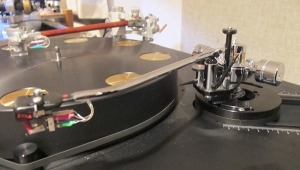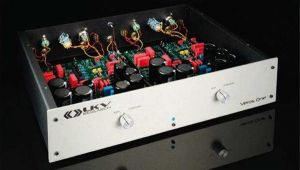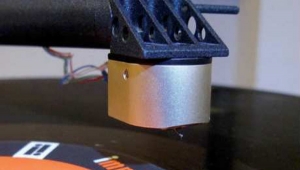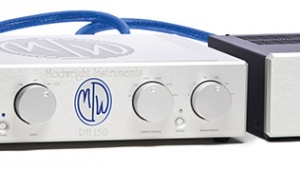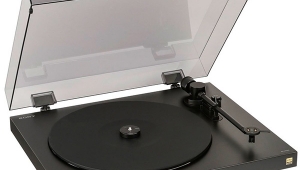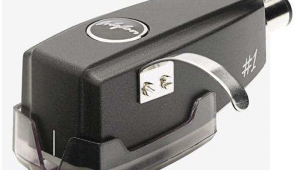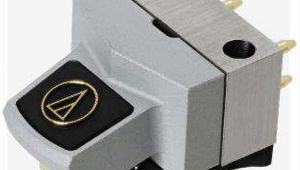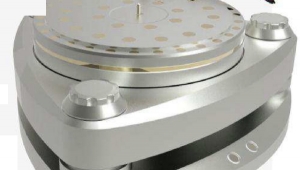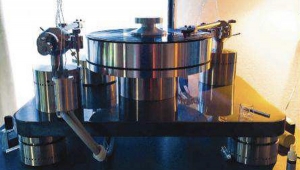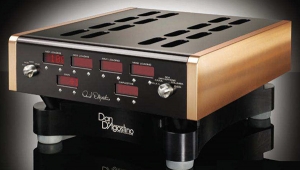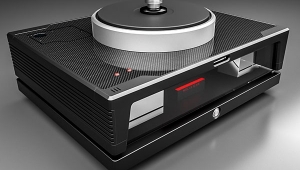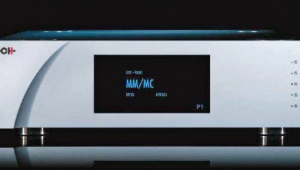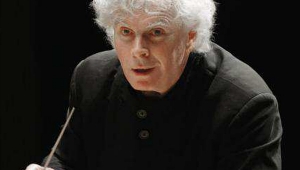| Columns Retired Columns & Blogs |
Analog Corner #264: Ortofon Windfeld Ti Cartridge Page 2
Setting a 92° SRA was easily accomplished with the tonearm close to parallel to the record surface. Setting azimuth using a digital oscilloscope resulted in 27dB (left) and 28dB (right) of channel separation at 1kHz—a few dB better than specified in the Windfeld Ti's owner's manual. This was achieved with the cantilever just slightly off from perpendicularity. In other words, this sample of the Windfeld Ti was well built—just what you should expect in a $4390 phono cartridge!
Footnote 3: Classical radio announcer Martin Bookspan wrote Stereo Review's "Basic Repertoire" column, as well as books and many other things. Still alive at 91, he's probably the person responsible for my having bought the Collegium Aureum set all those years ago.
Windfeld Ti Sound
In my May 2008 column, back when I was still a callow, inexperienced audio reviewer, I wrote of the original Ortofon Windfeld: "The Windfeld surprised me by sounding fundamentally correct with just about every record I played. It couldn't make a dull recording sparkle, or smooth out a grainy one, but neither did it shine a spotlight on what was wrong. It just seemed to get out of the way.
"I've heard cartridges with more sparkle on top, and with greater transient definition on top and bottom, both of which can complement and improve certain LPs. But until the Windfeld, I can recall hearing none that produced such perfect symmetry of tonality and texture at both ends of the audioband—without inducing boredom, or a sensation of wanting more of something."
In the context of what was available at the time I wrote: "You can find lusher-sounding cartridges, particularly in the upper mids; you can find models that sound more dry and detailed, and some that carve out space with greater surgical precision. But tonally and, especially, texturally, I don't think you'll find a cartridge that's more evenhanded and honest than the Ortofon Windfeld, or that reveals more true detail, especially in its ability to quickly settle and move on to the next event."
However, I also wrote: "The Windfeld fell short only in a slight politeness in macrodynamics that prevented it from punching through during large-scale orchestral swings. But that was more than compensated for by its macrodynamic performance and its ability to catch every last grain of reverberant decay."
So yes—the original Windfeld had remarkable tonal neutrality, and was perhaps smooth to a fault and lacking in dynamic slam, especially compared to the far more expensive cartridges I named in the review: the Transfiguration Orpheus (the first "explosive" Transfiguration, in my opinion), and the Lyra Titan i, considered by its detractors to be too analytical, with etchy, too-sharply-drawn transients.
The MC A90 demonstrated what could be achieved, sonically, by using SLM technology to create a remarkably nonresonant cartridge body; the MC Anna did likewise, and its nonmagnetic armature added the benefits of extreme macrodynamics while revealing lush midrange textures resulting not from added colorations, but from a reduction in mechanical resonances. (The MC Anna was actually too much for the still-excellent Continuum Audio Labs Cobra tonearm—something I didn't understand until I got the Swedish Analog Technologies arm and installed the MC Anna in it—but that's another story.)
Ortofon brought some of the MC Anna's technology to the MC A95 to produce what is, essentially, a superior version of the MC A90, dynamically and, especially, texturally. Of course, other cartridge makers then put greater efforts into reducing their products' structural resonances and improving their generators, and eventually it was time to update the Windfeld.
You have to like and appreciate how carefully considered and methodical have been Leif Johannsen's advances and updates over the past few years, up and down Ortofon's Exclusive line (the cartridges hand-built upstairs, as opposed to the ones built by machine downstairs). What he's achieved with the Windfeld Ti, sonically and technologically—adding SLM construction and a less ferrous armature—is major, yet the $600 price increase is literally less than nothing when you consider the last decade's worth of inflation: $3400 in 2007 dollars is equivalent to $4067.73 today. So in addition to Ortofon's top-shelf cantilever-and-stylus assembly, already included in the original Windfeld, you get all the upgrades free—a lot of cartridge technology for $4390. Yes, back in the real world, $4390 times four can get you a new Ford Fiesta—but we're not in the real world here, so drop it! If Ortofon is right about them, these upgrades should transform what was already a very fine cartridge into one even lower in tonal coloration and with greater macrodynamic slam.
Still Sweet Sound
The Ortofon MC A95 was installed on the SAT arm when Leif Johannsen visited, so that's what he listened to and commented on in the video posted on AnalogPlanet. At first, the Windfeld Ti seemed almost as punchy as the MC A95, while delivering richer mids and thus filling in an area where the MC A95 can sound slightly recessed. After a week or so of honeymoon, a period of blandness set in—transients softened, percussion lost its bite. But after some 30 hours the cartridge woke up, and it's stayed up—as have I, listening many evenings till way past my bedtime.
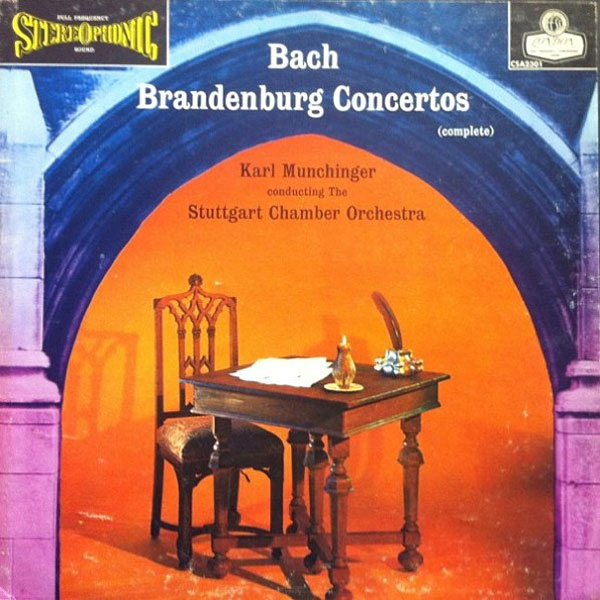
Of the many great recordings of J.S. Bach's Brandenburg Concertos, I have four favorites. First is Karl Münchinger conducting the Stuttgart Chamber Orchestra (3 LPs, London CSA 2301), a mint set I copped for $7.98 during the era of "Vinyl is a known carcinogen, get rid of it all now!" (Yes, I know: PVC is a carcinogen.) I also have the performance by Collegium Aureum licensed from Harmonia Mundi, in a budget reissue (2 LPs, RCA Victrola VICS 6023). The late Nikolaus Harnoncourt plays cello and conducts Concentus Musicus Wien on the original Das Alte Werk black/gold-label edition issued as two separate releases, bought new in 1967 (2 LPs, Telefunken SAWT 9459/60). I also have Jörg Kessler's ARS "Hear the Music" reissue from, I think, the 1990s. Kessler deserves more credit than he gets for keeping vinyl alive in that decade! The latter two are performed on original instruments; the Münchinger/Stuttgart sounds as if it's played on modern instruments—the sound is brawnier, and a modern flute sounds very different from a recorder.
I lay all this out to you for two reasons. First is that the Windfeld Ti retained all of the sweetness and lushness of the original Windfeld—something that makes it special in Ortofon's line of mostly tonally neutral cartridges—which made it supremely pleasurable to listen twice to all four of these sets. Second, while I'm no Martin Bookspan (footnote 3), it does drive me crazy when people say, "Oh, you listen to classical music? I thought you were a rocker." I listen to a great deal of classical music. In fact, I don't see how anyone can be an audio reviewer and not listen to it. Speaking of which, if you're a rocker and want to check out a Brandenburg with balls, try the Münchinger (blueback ffss only).
Tonally and texturally, the Windfeld Ti reproduced massed strings as well as almost any other cartridge I've heard: light and gossamer where required, yet also able to dig in and grip. With other great recordings, it also got right the harmonic structure of woodwinds, but it could be slightly soft with brass, cymbals, and other percussion, if less so than some other slightly mellow-sounding but highly desirable cartridges.
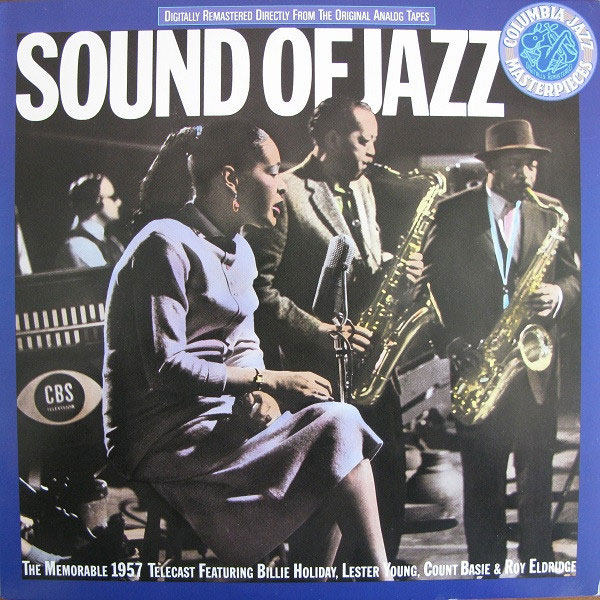
I can't recommend highly enough the Analogue Productions reissue of The Sound of Jazz—performances from a 1957 episode of the CBS TV series Seven Lively Arts, featuring Billie Holiday, the Count Basie All-Stars, the Red Allen All-Stars, the Jimmy Giuffre Trio, Jimmy Rushing, and Mal Waldron, and cut directly from the three-track master tape (Columbia CS 8040/Analogue Productions APPR 1098). Think Kind of Blue sound, recorded in the same studio. The reissue can sound a bit edgy through the MC A95 or the Lyra Atlas SL, but it was sweet through the Windfeld Ti, even if the brass lacked some bite. But the degree of smoothing produced by this cartridge was minor. Some might argue that this is what music sounds like, and that the other cartridges are overhyping it. I'm not getting in the middle of that one, but I could turn up the Windfeld Ti, and it rarely, if ever, offended.
The original Windfeld was great for jazz and classical, and especially voices; so was the Windfeld Ti, and it added the dynamic slam to deliver orchestral music without making me wish there was more to give on big climaxes. But if you mostly play hard rock or classic rock, you may want transients with more grit and edge on top. That said, if you play rock occasionally, you won't be disappointed, as you might be with some of the other sweetie cartridges.
But no one will be disappointed by the Windfeld Ti's reproduction of space: If they were on the recording, this cartridge delivered solid, three-dimensional images on wide, deep, stable soundstages. With a VTF of 2.3gm, the Windfeld Ti tracked well everything I threw at it, especially sibilants.
While $4000 isn't exactly pocket change, when you consider the high technology packed into the Windfeld Ti—the SLM titanium body, the boron cantilever and Replicant 100 stylus, the low-magnetic-flux armature—in my opinion, that $4000 buys you a piece of the highest echelon of cartridge performance for thousands fewer bucks.
While I Have Your Eyes (and Ears)
I take very seriously what gets published in this column. I try to avoid splashy strings of superlatives (but not, obviously, alliteration!) and "best in the world" hyperbole because I know many readers rely on what I write to make big-money purchases. I get their e-mails. I don't ever want to be wrong, especially when a lot of cash is involved.
So when, for my May 2015 column, I wrote a very enthusiastic review of the Swedish Analog Technologies tonearm ($30,000+)—I think it was the first review of the arm published anywhere—I did so only after I was sure that, as I said at the time, it was "the finest-sounding tonearm I have ever not heard." And when I was sure, I bought one: serial no.006. Since then, every so often, SAT designer Marc Gomez has sent me comments from buyers of his tonearm, who write such things as "Fremer was right!" and "You [Gomez] are a genius!" So far, no one who's bought a SAT arm has e-mailed me to complain.
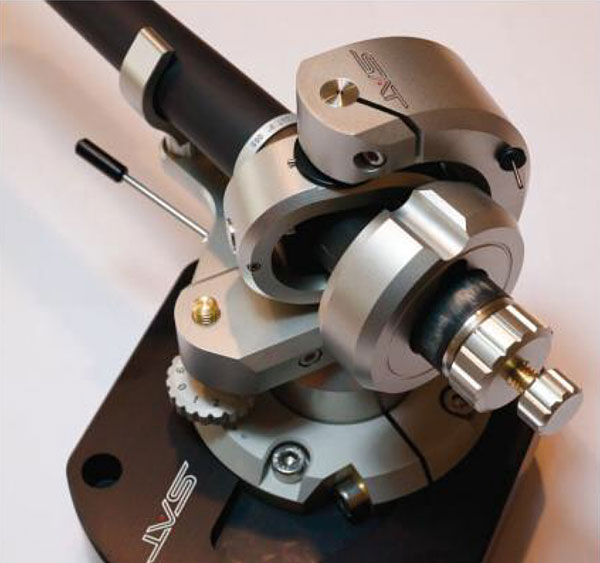
53 and counting: the SAT tonearm
The other day, Gomez sent me a photo that I hope will be published with this column: It shows that he's up to SAT arm #53! That's not a high number in the big picture, but it certainly is for a $30,000+ tonearm—and represents total gross sales of over $1.5 million!
Footnote 3: Classical radio announcer Martin Bookspan wrote Stereo Review's "Basic Repertoire" column, as well as books and many other things. Still alive at 91, he's probably the person responsible for my having bought the Collegium Aureum set all those years ago.
- Log in or register to post comments

